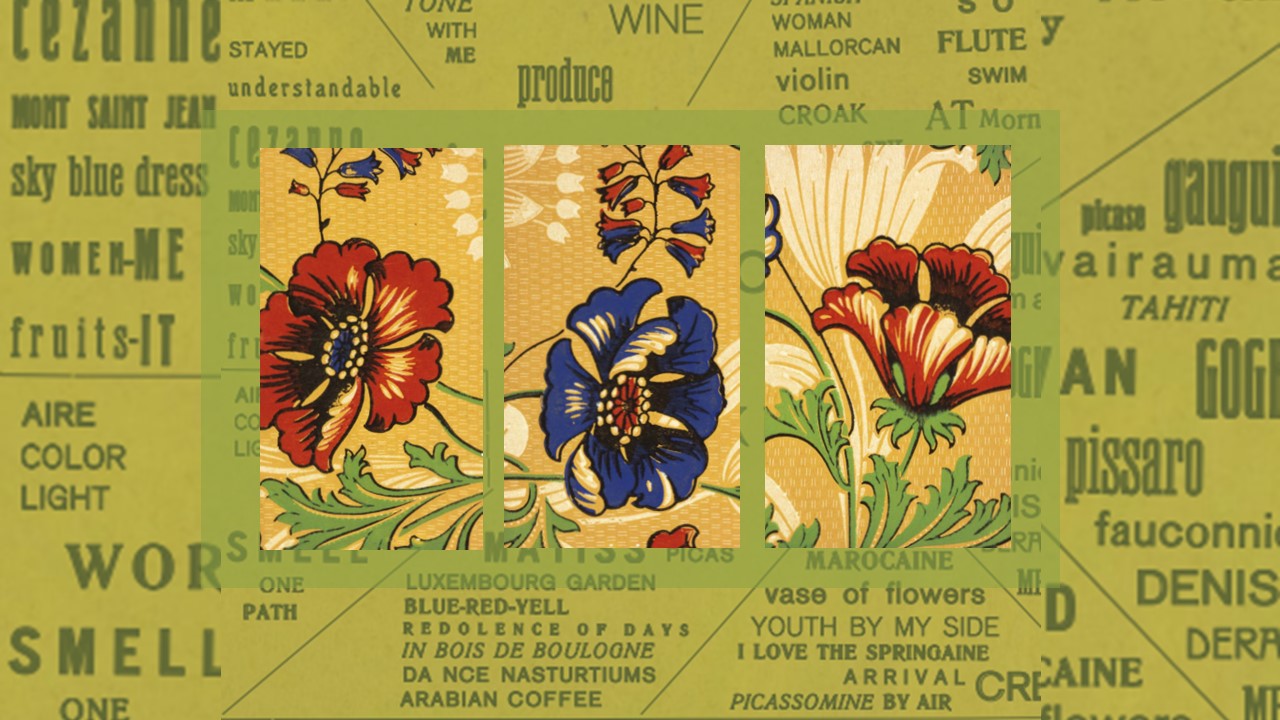TANGO TRANSLATION TYPOGRAPHY
In 1914 Vasilij Kamenskij published Tango with Cows (Танго с коровами), a volume of poetry and a key work in the history of Russian Futurism, graphic design and artists’ books. Even the choice of pentagonal pages breaks with traditional notions of publishing, and the poems are equally impressive for their poetic innovation and their unusual design. The most experimental poems in the book, which is printed on floral wallpaper, are entitled “Ferroconcrete Poems” and explore the spatial possibilities of the printed page beyond linear order and design conventions, thus inventing a new type of visual poetry between the figurative and the concrete. Award-winning poet and translator Eugene Ostashevsky and designer Daniel Mellis have translated Kamensky’s work into English, focusing their attention on the special interplay between the Futuristic poems and their typographic design. On the occasion of the intricately designed and translated edition being donated to the Staatsbibliothek zu Berlin, the project TANGO TRANSLATION TYPOGRAPHY explores Kamensky the Futurist artist and his exceptional work, the historical interrelations between the avant-garde and popular culture, and Futurist publishing and collaboration practices around 1910 on multiple levels.
The virtual exhibition from the holdings of the Staatsbibliothek and the translator’s private collection is complemented by three online material-based conversations between Eugene Ostashevsky and researchers from the Cluster of Excellence »Temporal Communities: Doing Literature in a Global Perspective« at Freie Universität Berlin. Drawing on the rich archival treasures of the Staatsbibliothek, these conversations explore a wider historical and thematic sphere by probing questions of words in movement, translation and the translatability of poetic artworks, transnational Futurist resonances and the avant-garde fascination with flying.
A cooperation with the Cluster of Excellence »Temporal Communities: Doing Literature in a Global Perspective«



